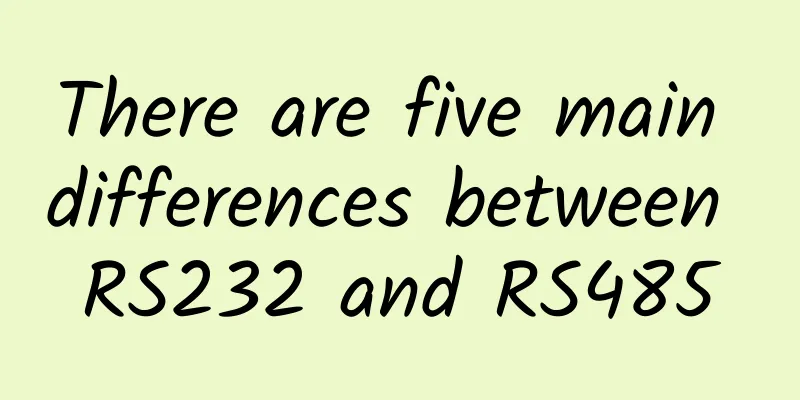There are five main differences between RS232 and RS485

|
Many communication protocols are often used in embedded systems, such as RS232 protocol, RS485 protocol, lightweight TCP/IP protocol, LoRa and Zigbee, etc. This article shares with you the differences between RS232 and RS485, which are the most commonly used in embedded development (also often used in single-chip microcomputer development) introduce RS232 is a standard for serial communication developed in 1970 by the Electronic Industries Association (EIA) of the United States, the Bell System, modem manufacturers and computer terminal manufacturers. Its full name is "Technical Standard for Serial Binary Data Exchange Interface between Data Terminal Equipment (DTE) and Data Communications Equipment (DCE)". The standard specifies the signal content of each pin of the connector and also specifies the levels of various signals. RS232 is an asynchronous transmission standard interface. Usually, the RS-232 interface appears in the form of 9 pins (DB-9) or 25 pins (DB-25). RS485 is a standard that defines the electrical characteristics of drivers and receivers in balanced digital multipoint systems. The standard is defined by the Telecommunications Industry Association and the Electronic Industries Alliance. Digital communication networks using this standard can effectively transmit signals over long distances and in environments with high electronic noise. RS-485 makes it possible to configure inexpensive local networks and multi-branch communication links. RS485 has two types of wiring: two-wire and four-wire. The four-wire system can only achieve point-to-point communication and is rarely used. The two-wire wiring method is now more commonly used. This wiring method is a bus topology structure, and up to 32 nodes can be connected on the same bus.
The specific contents are as follows:
Maximum baud rate of transmitted data: RS232 has a lower transmission rate, with the maximum baud rate being 19200bps; although the transmission speed is slow, it is still practical in many engineering applications; RS485 has a higher transmission rate, which can reach 10Mbps; the transmission speed is also much faster, and is often used in engineering control signal transmission. Networking (multi-machine communication):
|
>>: 3 Reasons Your IoT Needs SD-WAN
Recommend
Huawei launches Global Industry Vision 2025: Uncovering the industrial landscape of the intelligent world
Huawei recently released its Global Industry Visi...
25 Fudao companies cooperated to develop the scada system, committed to the construction of industrial big data platform and industrial Internet
At present, it is a global consensus that the Ind...
After reading this article, my grandma understands the principle of HTTPS
Anyone who has surfed the Internet knows that the...
Special price for standard interconnected bare metal servers: 8 cores, 32G memory, 500GB SSD, 100M bandwidth, starting from RMB 200 per month
Standard Interconnect is currently promoting bare...
Financial reports of the three major operators: In 2020, 5G started with an explosion
In June 2019, the Ministry of Industry and Inform...
Everyone is promoting 5G products and 5G phones. Is 5G really that good? Should I choose a 4G or 5G phone?
The word 5G is "very hot". The topic of...
10 excellent log analysis tools that network administrators must have
If network administrators want to master network ...
In the post-epidemic era, how can enterprises calmly cope with new IT challenges? SolarWinds helps you stay at the forefront of the times!
[51CTO.com original article] In the golden autumn...
In the win-win multi-cloud era, Juniper Networks helps enterprises achieve digital transformation
In July this year, Gartner released the 2019 Data...
Big data, 5G, and surgical robots are changing healthcare
The healthcare sector has also benefited from the...
Seven IT salary and hiring trends for 2018
The good times for tech workers will continue int...
VirMach: $1.15/month KVM-512MB/15GB/1TB/multiple data centers available
VirMach released several special packages on Blac...
Internet chat, what have you learned?
I believe there is no need to elaborate on what t...
The significance of optimizing the supply chain network design of enterprises
While the concept may seem simple in theory, the ...
Liu Liehong of the Ministry of Industry and Information Technology: As of October, more than 700,000 5G base stations have been put into operation
Since the issuance of 5G commercial licenses in m...









